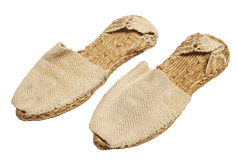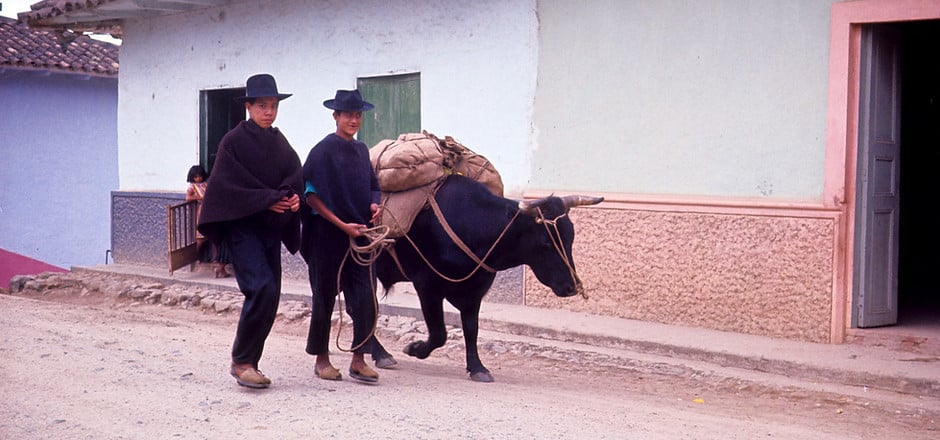Presented by Museum of the Peace Corps Experience and American University Museum
Mid-twentieth century
Pasto, Nariño, Colombia
Jute, cotton, 1 x 9 1/2 x 3 1/2 in. each
Collection, Museum of the Peace Corps Experience
Gift of Patricia Wand, Colombia, Buesaco 1963–65

Perhaps the simplicity of the sandals or the fibers in their composition caught my eye. I remember being totally intrigued from the first time I saw them in Colombia in 1963. Many campesinos (farmers), both men and women, wore them in town. Outside along the paths and in the fields, people mostly walked in bare feet.
I learned later that campesinos walked barefoot from their mountainside houses and slipped on sandals before they entered the village. I wondered why.
I referred to the sandals as zapatos (shoes) but my friends corrected me. It turned out they had a special name: alpargatas, a word I had to practice to pronounce. When I asked my friends about alpargatas, they responded, “Why would you care? Only poor campesinos wear them.”
“They look comfortable,” I said, “and I want to buy a pair.”
The women giggled at the thought of a gringa (White woman) wearing alpargatas, but they directed me to the larger marketplace in Pasto, capital city of Nariño, 38 kilometers from Buesaco.
Alpargatas are made from natural fibers easily found in many environments. The soles are braids of jute sewn together; the tops are woven heavy cotton. A heel strap and sturdy twine tied over the ankle keep the sandals on your feet while walking.
In the traditional Pasto marketplace I found a pair that looked like it would fit. The lady selling them was overcome with disbelief when I asked to try them on—and more incredulous when I told her I wanted to buy them. I asked her what to do about the missing piece that went over the ankle. She answered, “Use any old piece of rope.”
Finally, within the privacy of my house, I tried walking in my new alpargatas. The rope soles were coarse and uncomfortable. The heel and sole did not match the contours of my feet. I couldn’t stretch or flex my toes naturally. The rope bit into my ankle when I walked.
What a revelation! The alpargatas were not nearly as comfortable as they looked. Suddenly I understood why campesinos walked barefoot until they entered the village: they slipped on their alpargatas when they needed to protect the soles of their feet or to be dressed appropriately when they came to village market day.

The Committee for a Museum of the Peace Corps Experience is a 501(c)(3) private nonprofit organization. Tax ID: EIN # 93-1289853
The Museum is not affiliated with the U.S. Peace Corps and not acting on behalf of the U.S. Peace Corps.
Museum of the Peace Corps Experience © 2024. All Rights Reserved.